The enduring fascination of the world with the Titanic disaster led to a new tragedy last week when five people lost their lives in a “catastrophic explosion” of a submersible heading towards the site where the legendary ship has rested for the past 111 years.
The Titanic is just one of many shipwrecks lying in the deep waters of the Atlantic Ocean. The turbulent ocean has caused more maritime disasters than the collision with the iceberg that sank the Titanic, leading to the deaths of 1,517 people during the ship’s maiden voyage in 1912.
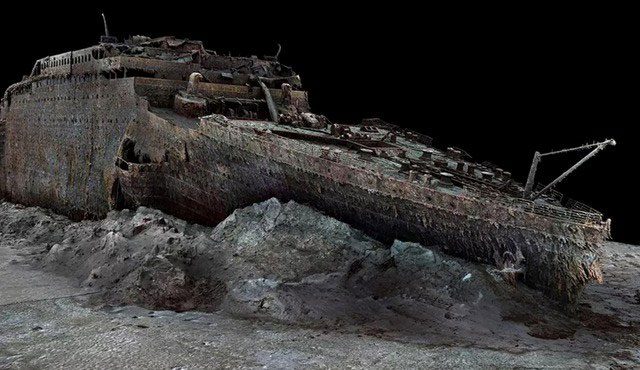
Image of a part of the Titanic wreckage recently released. (Photo: Atlantic Productions/ Magellan).
However, people continue to be drawn to the Titanic time and again. This historical tragedy has inspired novels, films, and a thriving tourism industry in the form of museums and exhibitions that attract hundreds of thousands of visitors each year.
And of course, it is inevitable that wealthy entrepreneurs have taken trips to see the sunken ship firsthand. The extreme costs and risks seem worth it to some who only wish to spend a few minutes peering through the dark waters at a decaying maritime vessel.
So what makes the Titanic so compelling?
According to Professor Brent McKenzie from the University of Guelph in Canada and author of the upcoming book “Dark Tourism: The Medium is the Message”, much of the Titanic’s allure stems from the pride and glamour associated with the original tragedy.
Professor McKenzie states: “The fact that so many people died, yet the ‘unsinkable’ Titanic and the celebrities on board seem to keep people endlessly fascinated. Furthermore, the fact that this happened over a century ago means that no new developments can emerge, and the true horror of the events becomes more difficult to comprehend or even care about for future generations.”
Titanic tourism is one of the oldest services in what is referred to as “ocean exploration tourism.”
Professor McKenzie continues: “An increasing number of tourists are drawn to sites and attractions associated with death, tragedy, and suffering. There are several reasons for this. One is that the availability and opportunities to visit these sites are increasing due to more travel options. There is also the influence of a growing media focus on ocean exploration tourism.”
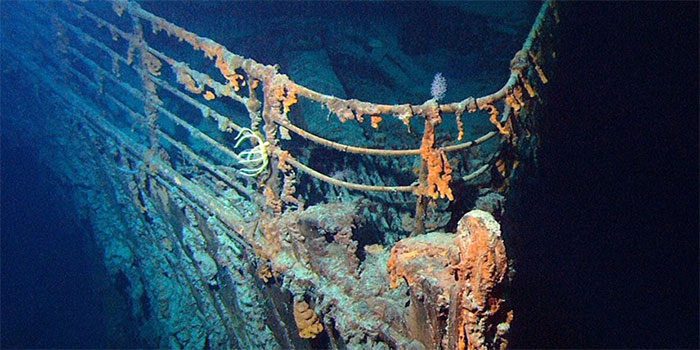
The bow of the Titanic. (Photo: NOAA).
Industry Boom
For most history enthusiasts of the Titanic, there are standard travel options: the Titanic Museum in Belfast, where the ship was built; in Liverpool, where it was registered; in Southampton, where passengers embarked; and in Cobh, its final port of call.
In Halifax, Nova Scotia, cemeteries housing victims attract tourists, and at Cape Race in Newfoundland, the story of rescue efforts is recounted at the Myrick Wireless Interpretation Center.
Professor McKenzie points out Titanic-related attractions in places not directly connected to the tragedy, such as Florida and Tennessee, and cruise vacations that retrace the original route.
There is a long-delayed project by Australian entrepreneur Clive Palmer to build a full-size replica of the “Titanic II,” and occasionally there are updates about this endeavor.
Then there are the expeditions. A few hours’ drive north of the Titanic cemetery, St. John’s, Newfoundland, serves as the starting point for OceanGate Expeditions’ 8-day trips priced at $250,000 per person, which includes the descent to the Titanic wreck.
OceanGate began its trips to the Titanic in 2021. According to court documents, at least 28 people visited the wreck with the company last year, despite legal claims regarding its seaworthiness and doubts about the unusual design of the OceanGate submersible.
Mr. Dik Barton, a Titanic expert, noted that the eagerness to risk dangerous depths for a glimpse of the wreck has contributed to the unsafe demand for Titanic experiences.
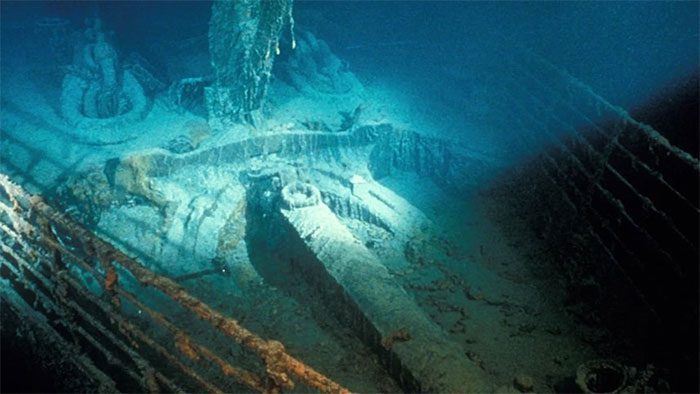
The Titanic wreck, sunk in 1912, was discovered at the ocean’s bottom in 1985. (Photo: National Geographic).
Mr. Barton, who has completed 22 expeditions to the Titanic wreck and is a former Executive Vice President of RMS Titanic, the only American company with recovery rights to the Titanic wreck, expressed: “The Titanic world is truly toxic,” (referring to Mr. Paul-Henri Nargeolet, a veteran French Navy member who died on the Titan submersible, who was once the underwater research director for the campaign).
Mr. Barton noted that many consider visiting the wreck a “privilege” and cited an event in 2001 when a couple controversially got married in a submersible hovering over the bow of the sunken ship.
He stated: “If someone built a vehicle to travel to the top of Everest, people would climb it. If there were a road, there would be an opportunity to go, and somehow, someone would go because they are capable or even over-capable. But after the inevitable investigation into the recent tragedy, people will need to rethink it. The risk factors, the legal and regulatory aspects. I think it could even extend to tourism to the moon, space, and all those other things.”
Mr. Barton believes that the loss of the Titan submersible “is a game changer.” This disaster will force us to reconsider two things. One is deep-sea operations, compliance and complexity, as well as the obligation to ensure that we are not only safe but also operating legally and in compliance with regulations.
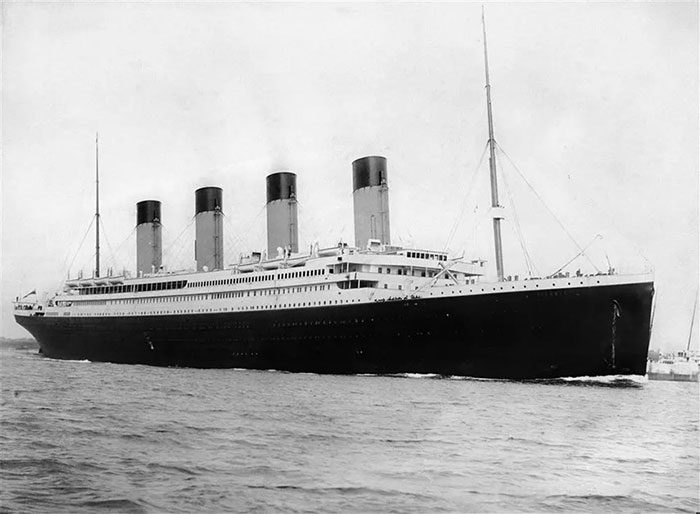
The Titanic seen before its departure in 1912. (Photo: Wiki).
Questions About Artifacts
The “thirst” for a Titanic experience has also helped fuel a thriving if controversial industry surrounding the recovery of items from the ship.
Through his work with RMS Titanic, Inc, Mr. Barton has been involved in the recovery of artifacts, with an estimated nearly 10,000 items in existence. After this week’s tragedy, a question arises as to whether any further salvage operations will take place in the future.
All artifacts will be carefully cleaned, preserved, and meticulously categorized. More than half of the artifacts—about 5,500—are owned by RMS Titanic, Inc, and are displayed in venues from Las Vegas to Paris. They have even stirred controversy by branching into the digital world of NFTs.
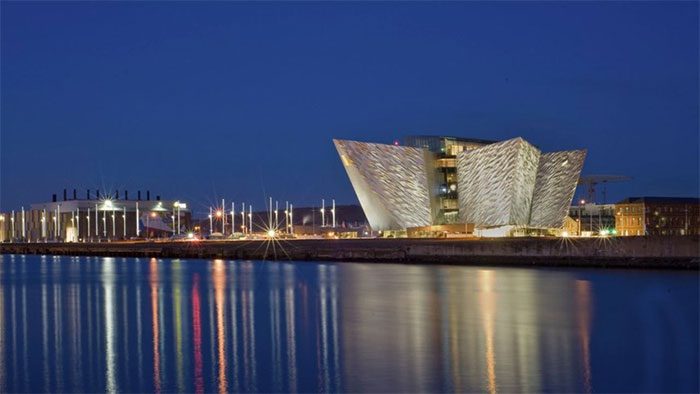
The Titanic Museum in Belfast is located on the site of the former Harland & Wolff shipyard, where the Titanic was designed, built, and launched. (Photo: CNN).
The Vanishing Wreck
The Titanic Museum in Belfast, supported by Mr. Robert Ballard, who discovered the wreck, was part of a failed bid in 2018 to purchase the 5,500 artifacts that make up the RMS Titanic, Inc collection. The company’s website states: “To date, we have decided not to purchase artifacts from the Titanic wreck site and debris field for ethical reasons.”
“The Titanic is a very distinct subject, very controversial, and very emotional,” Mr. Barton said, pointing to many perspectives on the ethical issues involved. Some view the site as a mass grave, while others see it merely as a shipwreck; some believe the ship should be left undisturbed and that visits only accelerate its decay; others argue that it is important to remember the image of the ship and the contents of the wreck as much as possible.
However, what is indisputable is that one day the shipwreck will disappear, along with all the remaining artifacts on the ocean floor.
Estimates on the time it takes for metal-eating bacteria to completely erode the remains vary from 7 years to 50 years, but “no one knows for sure. The structural integrity of the ship, mainly at the bow, will eventually collapse, and once that structural integrity is compromised, it will fall into a huge pile of rust, quite literally.”
Nevertheless, the land-based industry surrounding the disaster, with renewed interest further fueled by this week’s tragic events, will outlast the final material traces of the wreck.




















































